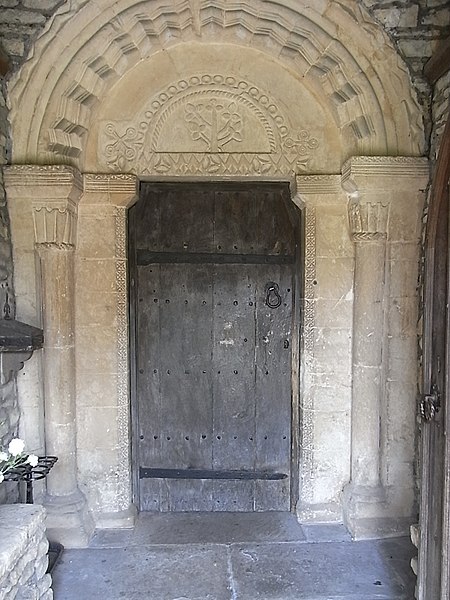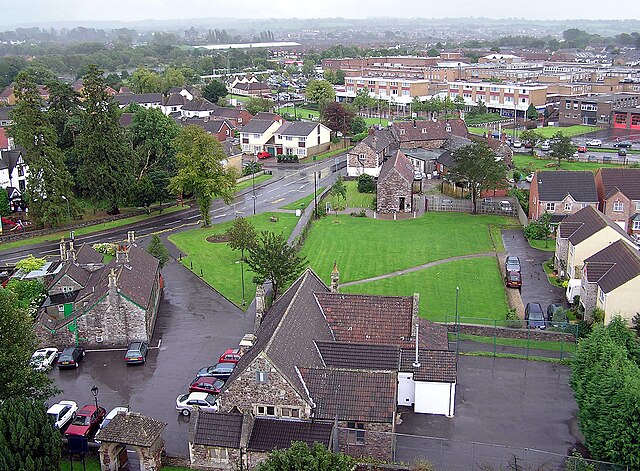Siston is a small village in South Gloucestershire, England. It is 7 miles (11 km) east of Bristol at the confluence of the two sources of the Siston Brook, a tributary of the River Avon. The village consists of a number of cottages and farms centred on St Anne's Church, and the grand Tudor manor house of Siston Court. Anciently it was bordered to the west by the royal Hunting Forest of Kingswood, stretching westward most of the way to Bristol Castle, always a royal possession, caput of the Forest. The local part of the disafforested Kingswood became Siston Common but has recently been eroded by the construction of the Avon Ring Road and housing developments. In 1989 the village and environs were classed as a conservation area and thus have statutory protection from overdevelopment.
St. Anne's Church, Siston, viewed from the southeast
Siston Court in 1712. Engraving by Jan Kip (1653–1722) published 1712 in Sir Robert Atkyns's The Ancient and Present State of Gloucestershire. Viewed from east
Gate Lodges to Siston Court, grade II* listed buildings
Norman doorway, St. Anne's Church, Siston. In the tympanum is depicted a tree of life.
South Gloucestershire is a unitary authority area in the ceremonial county of Gloucestershire, South West England. Towns in the area include Yate, Chipping Sodbury, Kingswood, Thornbury, Filton, Patchway and Bradley Stoke. The southern part of its area falls within the Greater Bristol urban area surrounding the city of Bristol.
Yate town skyline





